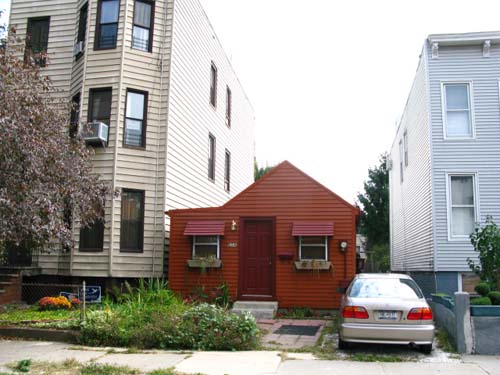Going Greener By Going Tiny
by Tracy Bannister
The Tiny House Movement, fueled by documentaries and home design shows, has taken America by storm, and has infiltrated Brooklyn. Brooklyn is no stranger to tiny homes, as those who wish to call the city center home will need to fork out just under $11,000 per square meter should they wish to purchase. While a tiny home is a worthwhile pursuit for those who are able to sacrifice some space in order to live off the grid to a certain degree and possibly mortgage-free, it also happens to be a great way to take some pressure off the environment.

Repurposing Becomes A Way Of Life
A warehouse in Crown Heights is the location of choice for one tiny homeowner, who decided to tackle the project after rocketing house prices in New York knocked her off the eligibility list. Even though she earns an annual income of six figures, this was not enough for her to afford a place of her own. Her tiny house, however, is only estimated at $30,000. The best part of taking on a project like this is that there is a lot of room to be creative. For the owner, using recycled denim for insulation and reclaimed farmhouse windows allows her to lower her carbon footprint even more.
The Desire To Do Better
Apart from the obvious financial benefits of owning a tiny home, there is also the option to lease a piece of land almost anywhere in the country. While New York City still needs to do a lot of work to make the city a little more hospitable to tiny home owners, there is always the possibility to hitch the tiny home to a plot outside the city and do the commute. Another way is to build a tiny home that just satisfies the minimum requirements in order to reduce your footprint and out-of-pocket costs. Prefab cabins are cost-effective, and can tick all the regulatory requirement boxes, while still fitting the small category.
Environmental Consciousness And Life Simplification: Some Of The Benefits
Thanks to popular shows like The Minimalist and the countless documentaries on hoarding, there is a sense of relief for homeowners who wish to escape the constant desire to own more stuff. Our propensity to consume seems to slow down as we become more aware of the damage we’re doing to the environment. Living simpler is a must in a tiny home, purely for the sake of keeping things clean and organized. While reducing the effect on the environment is a side effect of simpler living, it’s a welcome one. Living in a tiny home also means that a number of items in the home will need to perform a dual function, which reduces our need for more stuff.
A tiny home has the potential to lower the carbon footprint of households quite significantly. For homeowners, the level of eco-friendly projects in the construction and upkeep can go really high.



